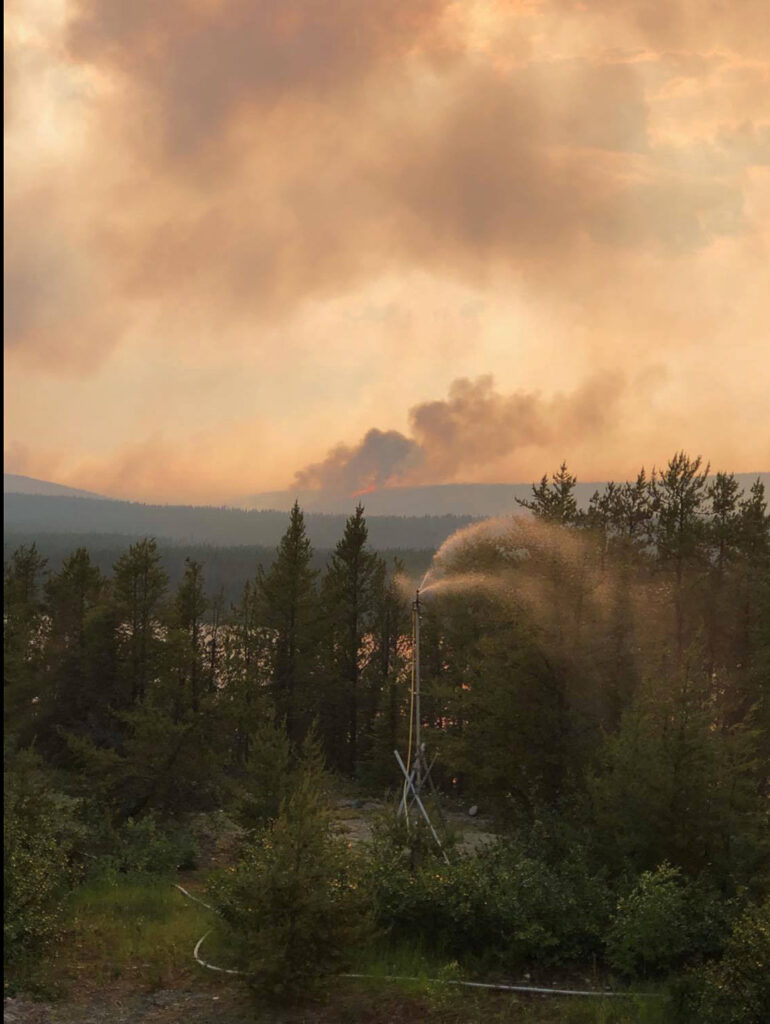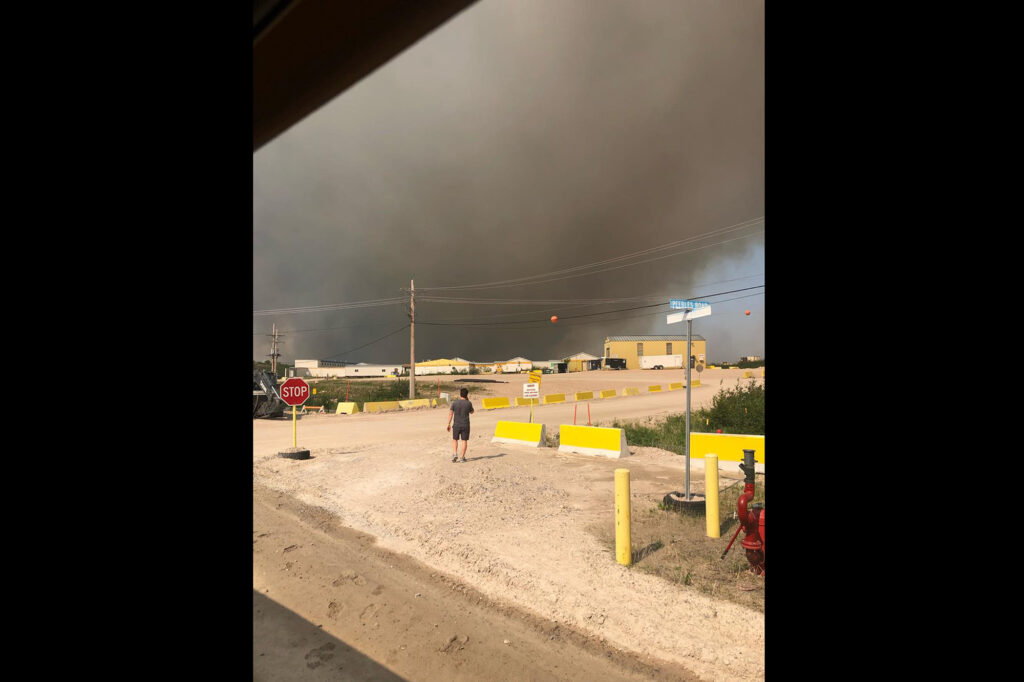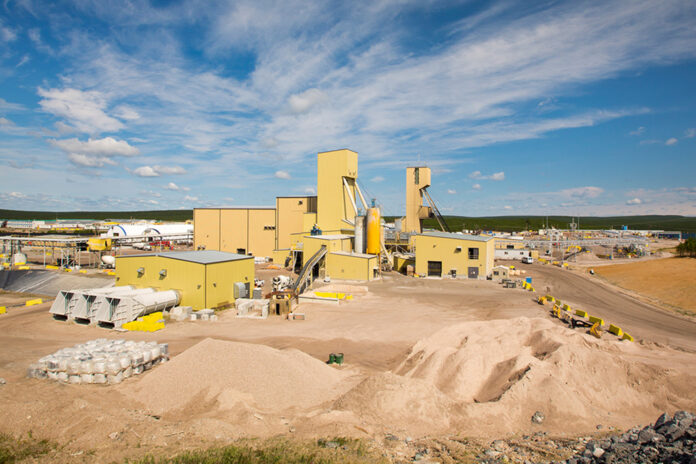Workers are returning to the Cigar Lake uranium mine in northern Saskatchewan on Sunday and Cameco plans to restart uranium production at the site later this week.
Around 230 workers were evacuated from the site on July 1 because of a wildfire threatening the facility. The Briggs fire moved past the main camp area “without serious impact” to the site, the company said in a written statement July 2.
Data from NASA in the United States and Canada showed the fire fully engulfing the region around the mine site on Thursday after moving northeast from Sawatzky Lake.

By Friday evening the fire was mostly dispersed to the northwest and southwest of the site. On Saturday workers confirmed there were plans to return to the mine site. On Sunday the company said it is now safe to move employees back to the mine.
Cameco now believes the full complement of personnel can “be safely remobilized and regular operations resumed” thanks to improved weather and smoke conditions and “minimal likelihood” of further road closures in the area.
Company spokesperson Jeff Hryhoriw told the Daily Herald on Sunday that Saskatchewan Public Safety Agency (SPSA) personnel have indicated they are comfortable with Cameco’s plans to restart operations at the mine.
“In consultation with provincial wildfire management officials from the Saskatchewan Public Safety Agency, we believe the risk to Cigar Lake posed by the fire has now subsided and the site is secure,” Hryhoriw said.
“The body of the wildfire has moved quite a distance away, and there is not much fuel left for any fire to burn around Cigar Lake. Nonetheless, we will continue to monitor the situation very closely over the coming days, extinguish any hot spots that may flare up in the area, and conduct other such duties to keep the site safe and the risk minimized.”
Hryhoriw said that Cameco activated its emergency response team and all of roughly 230 non-essential personnel were evacuated on Thursday.
Cameco thanked wildfire management personnel from the SPSA who “remained on-site continually assessing the situation and assisting to secure the operation.”
“They provided us with the best possible advice and direction that proved invaluable in informing all of our decisions during the wildfire,” Hryhoriw said.
“The people of Saskatchewan and the provincial government can be very proud of the work these professionals do to keep the province and its citizens safe.”
Cameco said on Friday that all of the roughly 80 essential workers remaining at Cigar Lake were safe but the situation remained active.
Workers on the scene told the Prince Albert Daily Herald that they were evacuated by land and flown out of Rabbit Lake because the smoke at Cigar Lake made it hard for planes to land. The Prince Albert Daily Herald has agreed not to name workers for privacy reasons.

“It was a rush and everybody was rushing around. The fire boss with a firefighting crew got out there and there were water bombers and helicopters flying all over,” one contract worker said on Thursday.
“Everybody was evacuated and nobody got hurt. I was just hoping the fire wouldn’t burn down the site because if the site burns down then I won’t have a job. I’m really hoping that they have it under control.”
Cameco is now in the process of transporting employees and contractors back to site.
Final inspections and preparation of equipment will happen over the coming days to ready the mine for a return to production.
“A full, regular workforce is returning to site. Cigar Lake site management and human resources will be making the precise staffing decisions affecting individual employees, which might depend in part on where they are at in their shift rotations,” Hryhoriw said.
“In general those boarding the flights back to site were relieved and thankful that their colleagues who remained at Cigar Lake to perform essential duties during the evacuation are safe and that the operation is secure. They seemed eager to be getting back to site to assess things for themselves and to get the mine back producing again.”
The company said assumptions have been made which may prove to be incorrect — such as the availability of personnel, and changing weather or fire conditions. Plans to return to normal may be delayed or may not succeed.
There is a risk of delays in remobilizing personnel back to the Cigar Lake mine site, there is a possibility that damage has occurred to infrastructure at Cigar Lake and those operating risks could also disrupt Cameco’s plans.
So far, Hryhoriw said all infrastructure appears intact and no structural damage seems to have occurred to any buildings at Cigar Lake.
“We will be conducting more detailed inspections over the days ahead to obtain a more precise assessment, but thus far we have found no serious impact to site from the wildfire,” Hryhoriw said.
“The only items we have detected thus far have been minor things that aren’t urgent and can be addressed over time.”
Some power poles and lines were damaged and will need to be repaired or replaced — but those are “limited to an isolated system” at the mine that is only required in winter, he said.
Cameco also said it may be unable to comply with applicable regulatory requirements depending on risk factors at Cigar Lake — but none of the company’s other northern operations are currently being impacted by forest fires.
“We recognize the risk of wildfires in northern Saskatchewan is always present, though, and continually monitor conditions and developments around them,” Hryhoriw said.
“It was certainly a dynamic and evolving situation.”


